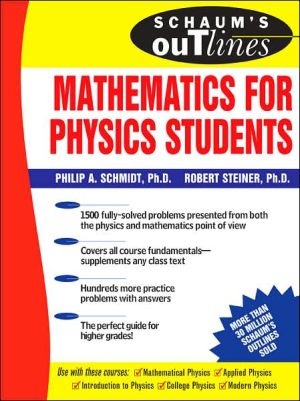Physics: Principles with Applications
Search in google:
This best-selling algebra-based physics book is known for its elegant writing, engaging biological applications, and exactness. Physics: Principles with Applications,Sixth Edition with MasteringPhysics™ retains the careful exposition and precision of previous editions with many interesting new applications and carefully crafted new pedagogy. It was written to give readers the basic concepts of physics in a manner that is accessible and clear. The goal is for readers to view the world through eyes that know physics. The new edition also features MasteringPhysics and an unparalleled suite of media and on-line resources to enhance the physics classroom. Describing Motion: Kinematics in One Dimension, Kinematics in Two Dimensions; Vectors, Motion and Force: Dynamics, Circular Motion; Gravitation, Work and Energy, Linear Momentum, Rotational Motion, Bodies in Equilibrium; Elasticity and Fracture, Fluids, Vibrations and Waves, Sound, Temperature and Kinetic Theory, Heat, The Laws of Thermodynamics, Electric Charge and Electric Field, Electric Potential and Electric Energy; Capacitance, Electric Currents, DC Circuits, Magnetism, Electromagnetic Induction and Faraday's Law; AC Circuits, Electromagnetic Waves, Light: Geometric Optics, The Wave Nature of Light, Optical Instruments, Special Theory of Relativity, Early Quantum Theory and Models of the Atom, Quantum Mechanics of Atoms, Molecules and Solids, Nuclear Physics and Radioactivity, Nuclear Energy; Effects and Uses of Radiation, Elementary Particles, Astrophysics and Cosmology. Intended for anyone interested in learning the basics of physics. Booknews This algebra-based physics text contains many intriguing applications, including airbags, bungee jumping, photocopiers, highway mirages, and computer hard drives. The pedagogy has been updated to reflect new research on how students learn. Consequently, chapters now include two or three conceptual exampleseach a sort of brief Socratic question and answer. Estimating examples show how to make order-of-magnitude estimates even when the data are scarce. Annotation c. by Book News, Inc., Portland, Or.
1. Introduction. 2. Describing Motion: Kinematics in One Dimension. 3. Kinematics in Two Dimensions; Vectors. 4. Motion and Force: Dynamics. 5. Circular Motion; Gravitation. 6. Work and Energy. 7. Linear Momentum. 8. Rotational Motion. 9. Bodies in Equilibrium; Elasticity and Fracture.10. Fluids.11. Vibrations and Waves.12. Sound.13. Temperature and Kinetic Theory.14. Heat.15. The Laws of Thermodynamics.







